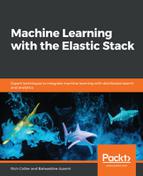IT application support specialists and application architects have a demanding job with high expectations. Not only are they tasked with moving new and innovative projects into place for the business, but they also have to also keep currently deployed applications up and running as smoothly as possible. Today's applications are significantly more complicated than ever before—they are highly componentized, distributed, and possibly virtualized. They could be developed using Agile, or by an outsourced team. Plus, they are most likely constantly changing. Some DevOps teams claim they can typically make more than a hundred changes per day to a live production system. Trying to understand a modern application's health and behavior is like a mechanic trying to inspect an automobile while it is moving.
IT security operations analysts have similar struggles in keeping up with day-to-day operations, but they obviously have a different focus of keeping the enterprise secure and mitigating emerging threats. Hackers, malware, and rogue insiders have become so ubiquitous and sophisticated that the prevailing wisdom is that there is no longer a question of if an organization will be compromised—it's more of a question of when they will find out about it. Clearly, knowing about it as early as possible (before too much damage is done) is much more preferable than learning about it for the first time from law enforcement or the evening news.
So, how can they be helped? Is the crux of the problem that application experts and security analysts lack access to data to help them do their job effectively? Actually, in most cases, it is the exact opposite. Many IT organizations are drowning in data.
